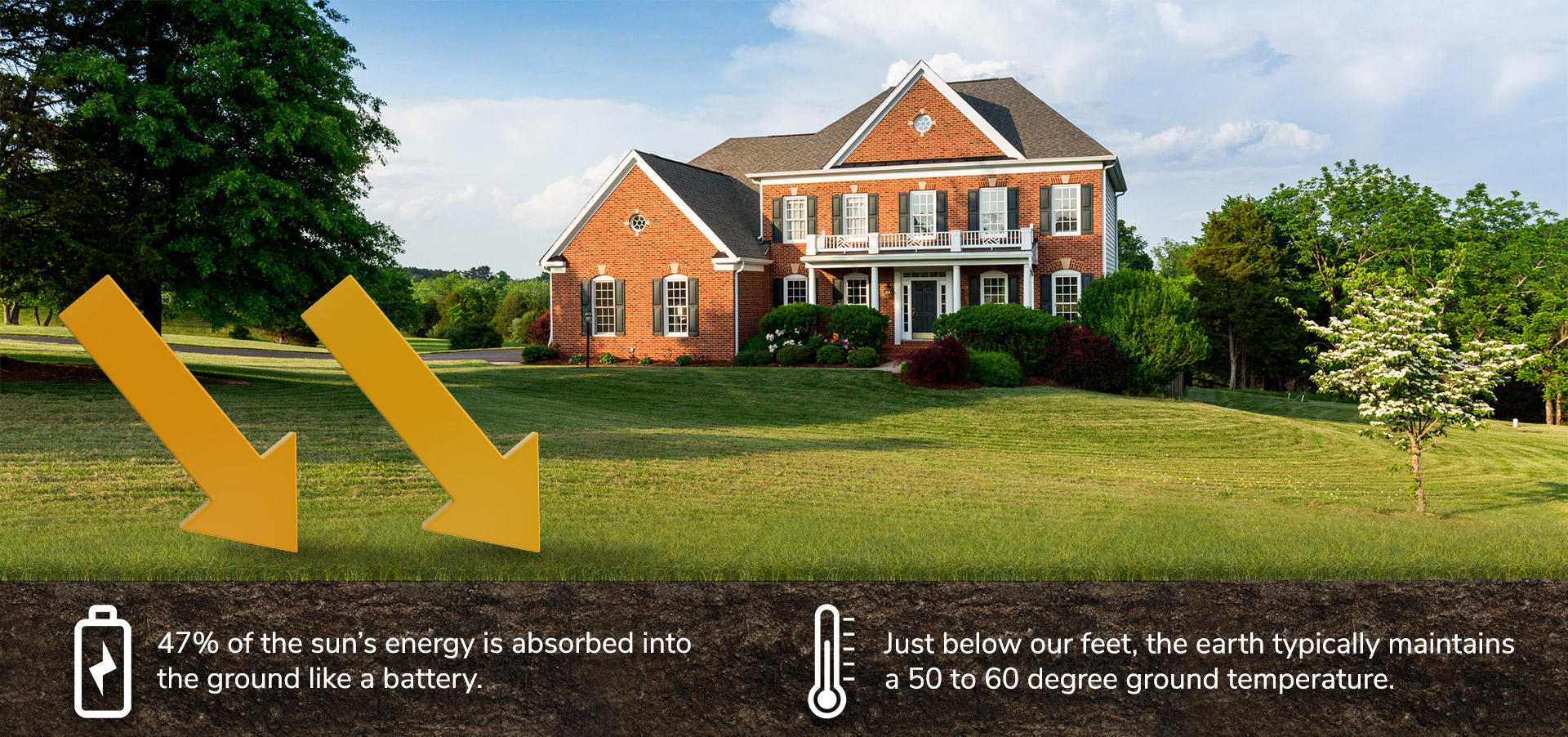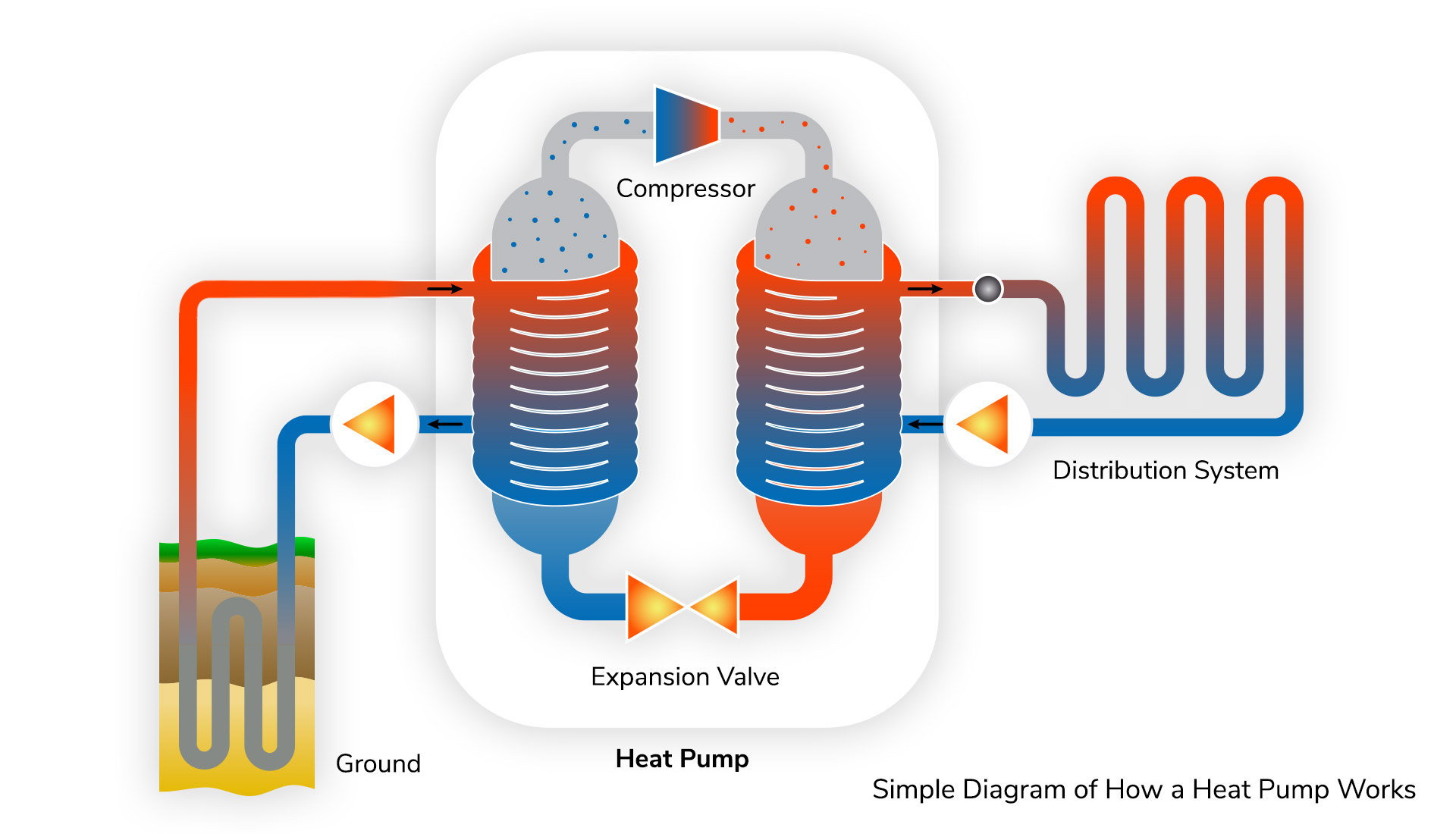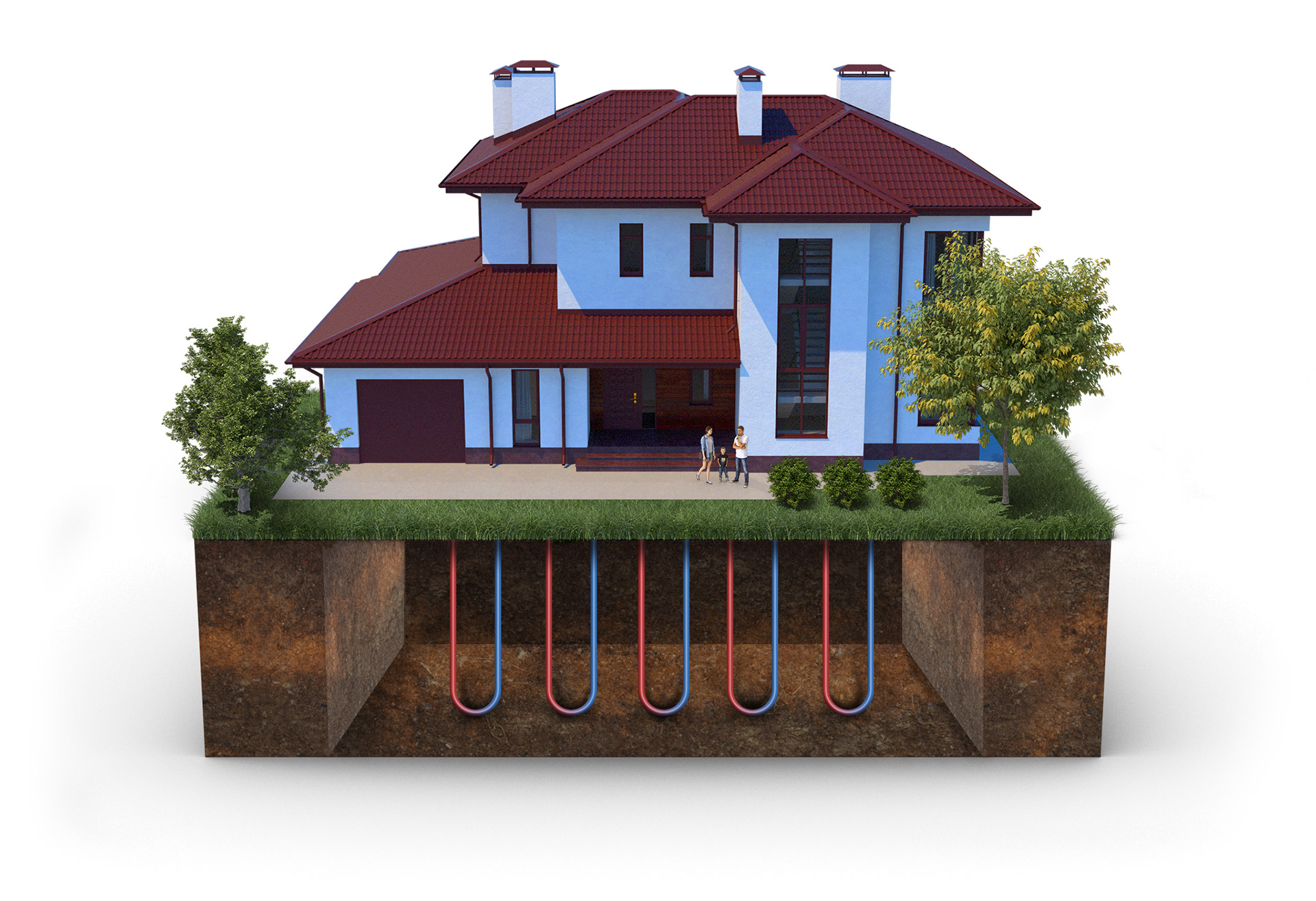ClimateMaster News
The most educational residential HVAC blog in the country, providing, HVAC systems articles and videos, as well as information on geothermal systems.
What is Geothermal Energy And How Can I Heat/Cool My House With It?

Published By: Joe Parsons
If you’ve heard about geothermal energy, you may be thinking it’s exclusive to places that expose elements of the earth’s core like a hot spring or geyser. But the fact is, no matter where you find yourself on our planet, there will always be near fifty-degree temperature, both winter and summer just below your feet.
That’s where geothermal heating and cooling systems play a vital role in renewable energy, tapping into the constant temperature of the ground. According to epa.gov, “Geothermal technology harnesses the earth’s heat. Just a few feet below the surface, the earth maintains a near-constant temperature, in contrast to the summer and winter extremes of the ambient air above ground.”

In many instances, using a looped pipe, geothermal systems can mobilize the temperature of the earth to circulate both heating and cooling into any home. It's incredibly efficient and requires far less use of fossil fuels. When looking for renewable ways to heat and cool a home, it's hard to beat geothermal heat pumps.
How Do Geothermal Heat Pumps Work?
The technical side of geothermal energy and how to harness it may seem complicated, but it’s not all that unfamiliar. We have appliances in our homes that already use some of the fundamental technology it takes to run these units. For example, the basic refrigeration cycle that we see in every window air conditioner, every refrigerator, even to cool our cars, can utilize water to make our atmosphere comfortable.
In a typical forced air application, air is blown across the coils of hot gas heating the house, the refrigerant is then cooled by the air, and it turns back into a liquid, and the process repeats. The same equipment can be used to cool the house in the summer simply by pumping the refrigerant in the opposite direction.
The difference with how a geothermal heating and cooling system works is simply by having interaction with the ground and its constant temperature. ClimateMaster, experts in geothermal technology, describe it as moving or “pumping” heat out of the ground or into the ground in order to make a house comfortable.

Because the key component for any geothermal heat pump is to be in contact with the ground, it needs a point of connection to the earth. Geothermal bores can be installed vertically or horizontally to accommodate the available land area. Loops are inserted into the boreholes and backfilled with thermal grout to ensure proper contact with the earth resulting in optimal heat transfer.
National Geographic explains, “The pipes that make up an earth loop are usually made of polyethylene and can be buried under the ground horizontally or vertically, depending on the characteristics of the site. If an aquifer is available, engineers may prefer to design an ‘open loop’ system, in which a well is drilled into the underground water. Water is pumped up, run past a heat exchanger, and then the water is returned to the same aquifer, through ‘reinjection.’”
With a geothermal system, this cycle repeats until your home reaches a desired temperature. The advantages of literally pumping heat out of the house or into the house from the earth itself are not only that it’s eco-friendly, but it pays off in lower costs for heating and cooling alike.

Are Geothermal Heat Pumps Right For You?
Many homeowners and businesses have made energy efficiency and reducing their carbon footprint high on their list of priorities. Renewable energy is certainly what geothermal heat pumps can deliver. If you’re a homeowner weighing the effects of modern life’s impacts on the ecosystem, geothermal is more than worth considering. Its advantages aren’t one-sided either.
On average, geothermal systems are 400% more efficient, compared to traditional gas or oil furnaces which max out about 75-98% of efficiency. Overall, around 70% of the energy used by geothermal heat pumps comes from renewable sources. According to comfort-pro.com, the energy savings from geothermal cooling systems is hands-down the number one reason to consider this type of technology. A ClimateMaster geothermal heat pump reduces energy costs by 30-70% on average which is why homeowners can typically recoup investments of a geothermal installation through energy savings in five to seven years. According to the US Environmental Protection Agency, geothermal heating and cooling systems have the lowest cost over their lifetime compared to traditional systems.

And perhaps the most convenient benefit is that geothermal systems are generally eligible for rebates and require less maintenance than conventional units. Since the major components of a geothermal heating and cooling system are buried, taking advantage of the temperature that is simply in the ground, they often have warranties of up to fifty years. And inside the home, the geothermal heat pump unit has a lifecycle at an average of twenty-five years, making them one of the most long-lasting systems on the market.
If you have an existing house with high energy bills, it most likely means you currently use propane, oil, or electricity for heating and cooling. And if you’re a homeowner preparing for a new build, with a geothermal system, you could be saving on heating and cooling costs from day one. So regardless of which applies to you, a geothermal solution could be exactly what you’re looking for.
ClimateMaster, Inc
7300 SW 44th St
Oklahoma City, OK 73179
800.299.9747
© ClimateMaster, Inc. All rights reserved 2024


